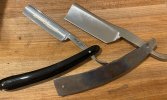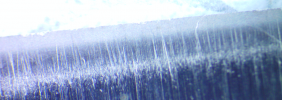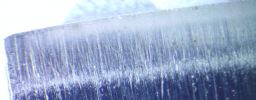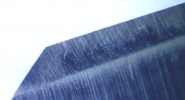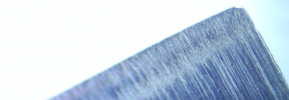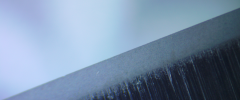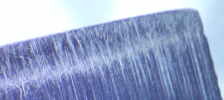I’m loving this. It’s great to see someone approach sharpening my razor with science as opposed to the “sprinkle the fairy dust during a full moon” approach I have heard before. I can’t wait to see the results.
It may be a failure of imagination, but I've never quite grasped how anyone learns to hone without a microscope. There are so many useful surprises when you blow things up so you can see them. Including this one.
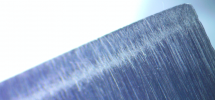
So what do we have there? Well, this is the toe on one side of the razor. It has some nice fine scratches from the Naniwa 3000 diamond stone. But it took hundreds of strokes to get it like that, and it still does not look like the rest of the edge, which is starting to look downright polished (as polished tends to look under a microscope).

So what's the difference? Well, for one thing, I suspect that smile. It seems possible that whoever made it actually lifted off the honing guide a bit. Can't say for sure. But another point is a thing that I see all the time, armed with the microscope, that I don't think I've ever seen discussed.
You can hone on a stone, and see perfect lines all the way along, and think you've got everything nailed. Then you drop down to a finer stone, and what you see is some places getting scratches, and other places not. The bevel was only flat relative to that prior grit, and there's some work to be done before it's flat to the new grit standard. The only solution to that is more strokes. I hope someday to find another, such as some way to spot what's going on before moving to the finer grit.
Anyway, my radar says that these scratches are sufficient to move on with, so I will proceed to 6000 grit Naniwa diamond next. After that, I may mix things up a bit, as I had to do on that 70HRC razor, or I may not. My guess is not. That razor was tearing up pretty badly on the edge, presumably due to brittleness. This one is not. Although it is interesting to note that the edge has not gotten less ragged, not that it was that ragged in the first place. But when honing on JNats, there is generally a steady reduction in raggedness as you move down the grits. It's also possible that resin-bonded diamond produces edges that are more ragged than vitrified diamond stones do. I don't want that to be true, because it's an expensive idea, but it could be true.
That's all defeatist talk, though. The edge looks good, for this stage of things, to my eye and my thumb, so it's time for the next step.

